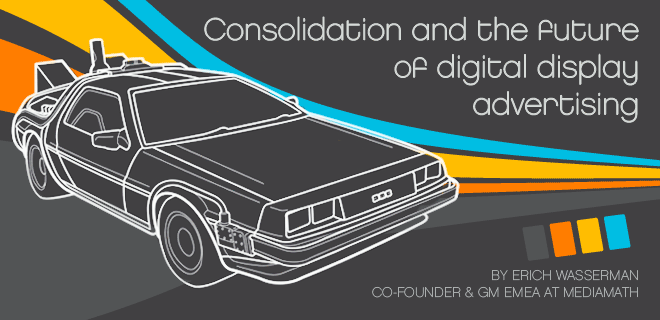
We are experiencing a boom in the digital display advertising market and the growth is remarkable. IAB Europe indicate that display has overtaken search as the fastest growing advertising channel in Europe, up 21.3% compared to 2010.
Technological evolution and innovation – principally from new technologies like demand-side and supply side platforms – are undeniably the driving force behind this growth. Demand side platforms allow marketers to manage digital media campaigns across multiple inventory sources through a single interface as well as in real time. Supply side platforms allow publishers to connect directly with those buyers.
Marketers are armed with a host of tools today, not least of which is direct control over targeting, optimisations, placement, pricing and metrics. Need to adjust your marketing strategy following this morning’s sales meeting? Just login and push those allocations out before lunch.
The knock-on effect of growth has cast the spotlight on the whole display environment as smart operators seek to get yet smarter about how they manage scale and therefore maximise business impact. Advertisers seek to maximise return on spend; publishers seek premiums for the audiences that they attract. A healthy and robust market matures.
In response to this growth, the approach of key technology providers has revealed a significant polarisation in the market, the significance of which cannot be overstated: What’s at stake is who controls vast amounts of precious data and therefore who benefits from its usage.
One approach is consolidation, in which a single provider gains the market a suite of powerful tools under a one-size-fits-all strategy. The other approach is interoperability, a focus on enabling the seamless usage of those technologies, data, media and analytics providers that best fit the needs of a particular business.
Google is leading the way with its consolidation strategy. Some of the most crucial pieces within its stack are, of course, a website analytics tool recording volumes of advertiser data, a demand side platform and ad server, an ad exchange for advertisers, and a supply side platform for publishers. Google’s message is loud and clear: it seeks to appeal to all stakeholders in this expanding ecosystem.
The consolidation strategy promises that each of these crucial components uniquely provides the greatest ROI to those stakeholders – yet the stack is rife with conflict. How, for example, do you maximise ROI for advertisers while maximising ROI for publishers from whom those advertisers buy? (Answer: You don’t.)
What the most sophisticated advertisers in the world know is that the display space is far more intricate and fragmented than a channel like search, which is dominated by a single player. To work at scale, display requires a mixed group comprised of publishers, networks, exchanges, targeting and optimisation technologies, analytics providers, and many others. So it’s improbable that one or two dominant players will emerge to lead the market. In fact, it is far more likely and healthier for all concerned that interoperability between best of breed solutions in the display market will allow the digital industry to play to its biggest strength: innovation.
The consolidation model preaches a one-size-fits-all solution. New technologies must be created or acquired, and these solutions must appeal to a great many businesses whose goals fit many more sizes than one. Conversely, interoperability is altogether more flexible and allows businesses to be nimble and to adapt our methods to create the best set of solutions for clients, while empowering a new breed of marketing professionals. Interoperability enables us to unite all available media for advertisers and publishers in a meaningful way, and it is an absolute necessity for companies who wish to participate in this vast and growing economy. Already we’re seeing the fruits of innovation well beyond display: in video, social media, mobile, digital out of home, and other emerging formats.
The digital advertising market will continue to thrive and provide outsized returns to stakeholders, but consolidation will surely constrict growth. For me the interest, inspiration and competitive spirit lies in the here and now. It’s just so much more, well, interesting.
 |
OPS Markets brings together online media leaders building the market and trading infrastructure for online advertising. Be part of OPS Markets to learn how to leverage RTB, DSPs, SSPs, DMPs, and data providers to maximize your online advertising in a market-driven environment. Register today for OPS Markets, which will be held April 18, 2012, in New York. |